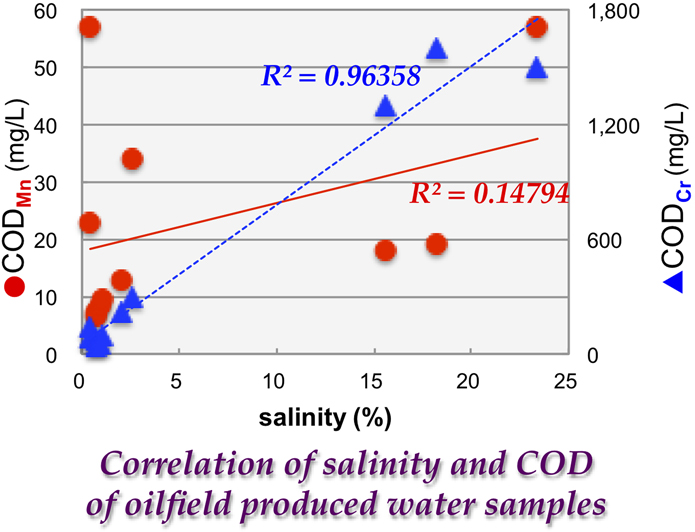Abstract
CODCr is a method of COD (chemical oxygen demand) measurement that is most accurate for analysis of low-salinity waters. However, CODCr is known to be affected by the chloride ion, which is present in high concentrations in saline, oilfield produced waters. In this study, three different methods of COD analyses (CODCr, CODMn, CODOH) were performed for prepared waters at 0-20 % salinity, and the effect of salinity on the results of each method was considered. Additionally, CODCr and CODMn of 11 samples of different, actual produced waters were also measured, and the validity of the results produced by each method was also considered. The results clearly indicated that values of CODCr for highly saline samples were not reliable. On the other hand, CODMn and CODOH analyses resulted in appropriate values, even in prepared water of 20 % salinity. In the case of CODMn, pre-analysis measures of chloride ion masking appear to be very important for obtaining these values. Based on this study, it is concluded that values resulting from CODMn or CODOH analysis methods were appropriate for the discussion of produced water, and the CODCr method is not recommended for the analysis of any such highly saline waters.
